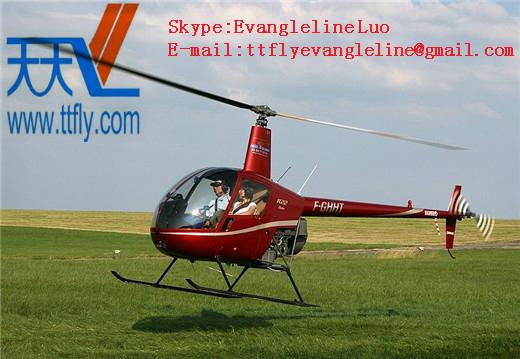

Show that the resulting series does not represent the data. (e) Find the a's and be's for several values of Kmax > (where N = the number of data points). Recall that a function has a maximum or a minimum when its derivative equals zero. Find the peak-to-peak amplitude by finding the maximum and minimum values of as predicted by the Fourier series solution.

Would you feel comfortable using this function to interpolate the data? Why or why not? (d) The actual loudness of the helicopter depends on the maximum peak-to-peak amplitude of the signal. The 206 features prominently in the 1982 film The Thing. (c) Plot the function (inverse Fourier transform) and the original data on the same plot. The Bell 206 Jetranger is a two-bladed, single-engined helicopter manufactured by Bell Helicopter. k to illustrate the relative size of each term in the series. (b) Any term in the Fourier series can be written: ar cos (kwt) + b sin(kwt) = C₂ cos (kwt + ok) where C = √√a + b² and 6x = tan¯ -0% ak Find the C's and plot their amplitude on a bar graph vs. = (a) Find the real discrete Fourier transform for this data set. The data points are equally spaced in time, and the period of the data collection is of a second. The following data show measurements of acoustic pressure (made dimensionless) for a two-bladed helicopter roto through of a rotor revolution. The F-Helix is a 1-6 seat two-bladed fly-by. The army is interested in characterizing the acoustic signature of a helicopter. helicopter, an Italian helicopter, and had purchased the Silvercraft helicopter manufacturing company in 1990. Si specifica inoltre che la simulazione contiene calcoli effettuati con dati e algoritmi di pubblico dominio e deve quindi essere considerata come un mero ausilio al calcolo svolgibile manualmente o con strumenti equivalenti.1. Cineca, l’Università di Modena e Reggio Emilia e il Focus Group IRIS non si assumono alcuna responsabilità in merito all’uso che il diretto interessato o terzi faranno della simulazione. La presente simulazione è stata realizzata sulla base delle specifiche raccolte sul tavolo ER del Focus Group IRIS coordinato dall’Università di Modena e Reggio Emilia e delle regole riportate nel DM 589/2018 e allegata Tabella A.

Si consideri che Anvur calcola i valori degli indicatori all'ultima data utile per la presentazione delle domande. La simulazione può differire dall'esito di un’eventuale domanda ASN sia per errori di catalogazione e/o dati mancanti in IRIS, sia per la variabilità dei dati bibliometrici nel tempo. La simulazione si basa sui dati IRIS e sugli indicatori bibliometrici alla data indicata e non tiene conto di eventuali periodi di congedo obbligatorio, che in sede di domanda ASN danno diritto a incrementi percentuali dei valori. Si ricorda che il superamento dei valori soglia (almeno 2 su 3) è requisito necessario ma non sufficiente al conseguimento dell'abilitazione. Il report seguente simula gli indicatori relativi alla propria produzione scientifica in relazione alle soglie ASN 2021-2023 del proprio SC/SSD. Performance Analysis of a Lightweight Helicopter Featuring a Two-Bladed Gimballed Rotor AVANZINI, Giulio G. The Bell 206 is a family of two-bladed, single- or twin-engine helicopters, manufactured by Bell Helicopter at its Mirabel, Quebec plant. Finally, the stability characteristics of the vehicle are assessed in order to gain some preliminary insight on the handling qualities of the helicopter. Results on performance and controllability are presented and discussed. Periodic trim conditions are evaluated using a shooting method in order to assess the impact of rotor wobbling mo- tion on helicopter steady–states. A specific aspect of the gimballed rotor is the presence of a sustained wobbling motion of the hub, even in steady–state conditions.Ī nonlinear model of the vehicle is derived that includes, among other aspects, a detailed model of main rotor, nonlin- ear, quasi–static blade aerodynamics, inflow dynamics, a simple fuselage aerodynamic model and a tail rotor model derived from experimental wind–tunnel tests.
#TWO BLADED HELIO COPTER DRIVERS#
The main technical drivers of the novel design are to reduce the high level of 2/rev vibrations occurring in teetering rotors, to retain adequate control power in low–g maneuvering and to improve handling qualities using the stabilizing bar to increase roll and pitch damping. The main rotor features a gimballed hub with elas- tomeric bearings equipped with a Bell-Hiller to improve stabil- ity, while the fixed pitch, rpm controlled, five-bladed tail rotor is a fenestron design. This paper deals with the investigation of performance and sta- bility characteristics of a two-seater, two-bladed, lightweight he- licopter developed in the framework of VLR certification spec- ifications.


 0 kommentar(er)
0 kommentar(er)
